The Samsung Galaxy S7 & S7 Edge Review, Part 1
by Joshua Ho on March 8, 2016 9:00 AM ESTGPU Performance
On the GPU side of things, Qualcomm's Snapdragon 820 is equipped with the Adreno 530 clocked at 624 MHz. In order to see how it performs, we ran it through our standard 2015 suite. In the future, we should be able to discuss how the Galaxy S7 performs in the context of our new benchmark suite as we test more devices on our new suite to determine relative performance.
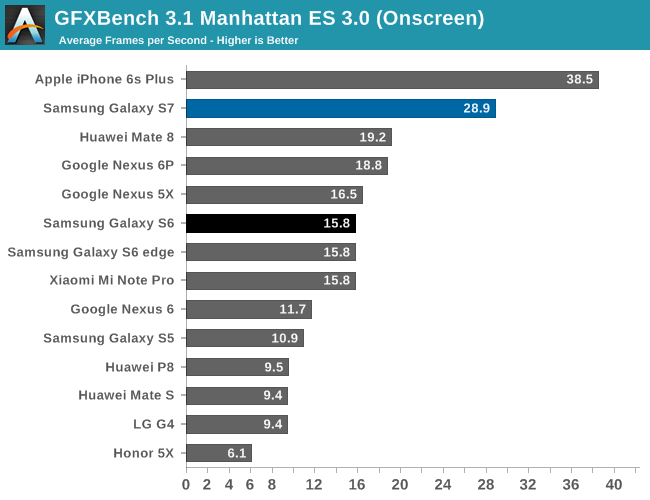

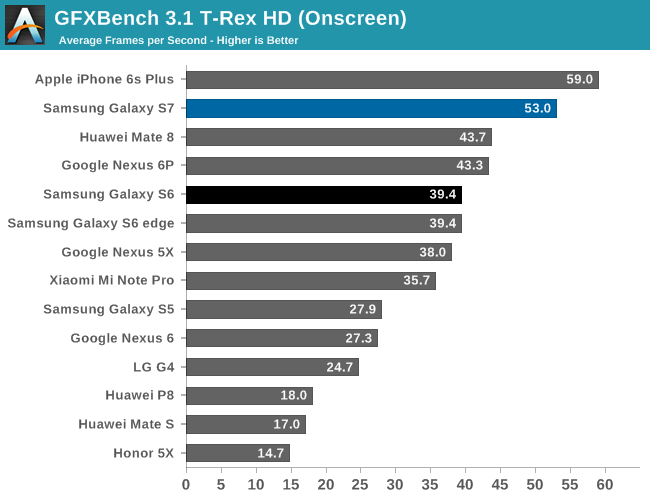
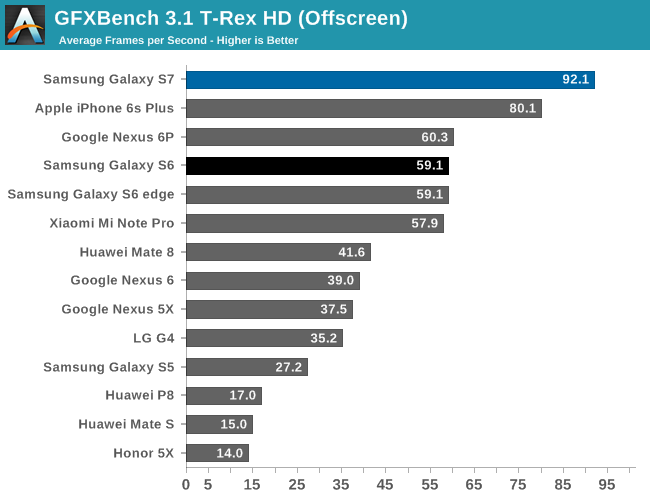
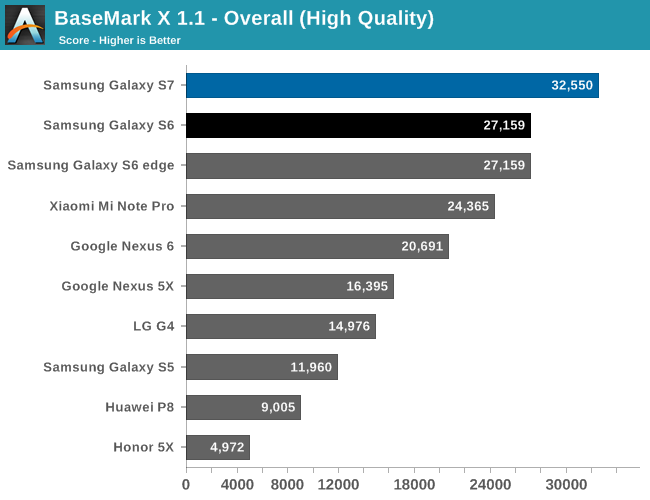

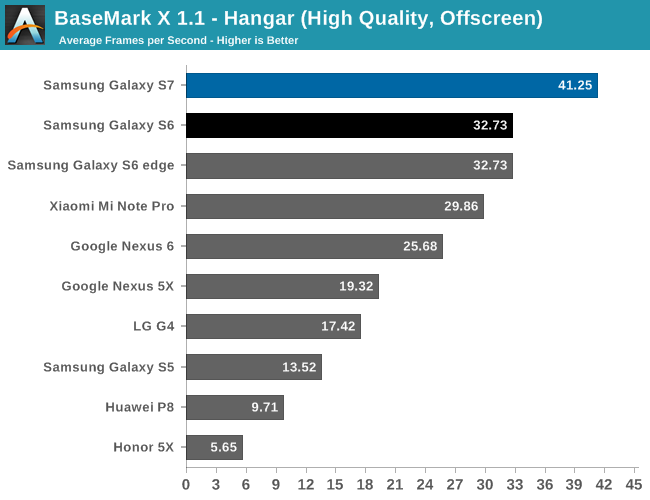
At a high level, GPU performance appears to be mostly unchanged when comparing the Galaxy S7 to the Snapdragon 820 MDP. Performance in general is quite favorable assuming that the render resolution doesn't exceed 2560x1440.
Overall, the Adreno 530 is clearly one of the best GPUs you can get in a mobile device today. The Kirin 950's GPU really falls short in comparison. One could argue that turbo frequencies in a GPU don't make a lot of sense, but given that mobile gaming workloads can be quite bursty in nature and that gaming sessions tend to be quite short I would argue that having a GPU that can achieve significant levels of overdrive performance makes a lot of sense. The A9 is comparable if you consider the resolution of iOS devices, but when looking at the off-screen results the Adreno 530 pulls away. Of course, the real question now is how the Adreno 530 compares to the Exynos 8890's GPU in the international Galaxy S7, but that's a question that will have to be left for another day.










202 Comments
View All Comments
kamhagh - Sunday, March 13, 2016 - link
Another terrible phone :Sgfieldew - Sunday, March 13, 2016 - link
I have an Exynos variant of the S7. I ran the browser based tests for you.Kraken 1.1 - 2553
Octane 2.0 - 12602
WebXPRT - 168
gfieldew - Sunday, March 13, 2016 - link
Sorry, I should have mentioned that I used the Samsung version of the AOSP Browser called simply Internet.lilmoe - Sunday, March 13, 2016 - link
Andrei,Just got my GS7 Edge and ran your NAND benchmark (4K random 256K sequential).
I'm getting:
*sequential: 524.43 MB/s read, 149.03 MB/s write
*random: 76.76 MB/s read, 14.99 MB/s write
What are your exact settings in AndroBench?
lilmoe - Sunday, March 13, 2016 - link
Sorry, I meant to address Joshqasdfdsaq - Wednesday, March 23, 2016 - link
Yeah, I'm getting similar results to you (~400 read, 140 write, 80/15 random) on the S7, both with AndroBench and several other benchmarks. Those numbers in the article look... offqasdfdsaq - Wednesday, March 23, 2016 - link
Here's a point. Anandtech are testing the Snapdragon 820 variant, whereas my results are from the Exynos variant. Which one were you testing?lilmoe - Friday, April 15, 2016 - link
Exynos, of course.truelovv - Monday, March 14, 2016 - link
Truelovv.com is a 100% free dating site for singles and Relationship Who are looking to meet their special someone, True Lovers and after they can do romance and create a finalily relationship.True Lovv Website is Founded because When you are FREE and you want to chat someone then you can come into our website and Do Flirt, Romance, Chatting, Messaging etc. with your life partner or your True Lover. The only reason we require these forms is so we can match you with the right man or woman, and to make you feel comfortable at our site for singles dating.
http://www.truelovv.com/
Aritra Ghatak - Wednesday, March 16, 2016 - link
Can anybody provide the link to the material wall in Software UX second screenshot?